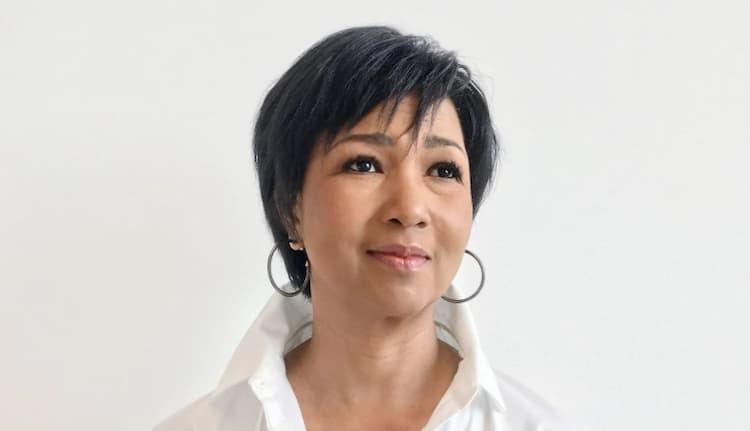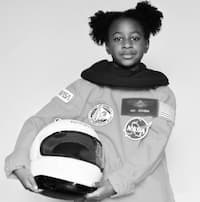Biography
Mae Jemison is an American physician, engineer, and former astronaut of NASA. In 1992, she was assigned as a mission specialist on the Space Shuttle Endeavour, making history as the first African-American woman to journey into space. Jemison became a member of NASA’s astronaut corps in 1987 and was chosen to participate in the STS-47 mission, which took place from September 12–20, 1992, and saw the Endeavour orbit the Earth for almost eight days.
Age
She is 67 years old as of 17 October 2023. She was born in 1956 in Decatur, Alabama, United States. Her real name is Mae Carol Jemison.
Family
Jemison, the third child of Charlie Jemison and Dorothy Jemison (née Green), was born in Decatur, Alabama, on October 17, 1956. Her mother spent the majority of her career teaching math and English to elementary school students at the Ludwig van Beethoven Elementary School in Chicago, Illinois, while her father oversaw maintenance for a nonprofit organization.
The family initially resided in Woodlawn before moving to the Morgan Park area. Jemison has known since she was a small child that she wanted to study science and travel to space eventually. Her fascination in space was further piqued by the television series Star Trek and, specifically, by the portrayal of Lieutenant Uhura by African-American actress Nichelle Nichols.
Education – College
Jemison received degrees in chemical engineering and African and African-American studies from Stanford University. After that, she graduated from Cornell University with a medical degree. Jemison, a native of Chicago, had a keen interest in science at first, but her kindergarten instructor didn’t immediately get it. Her love of dance was further stoked by her inquisitiveness about space travel and the dearth of female astronauts during the Apollo missions.
She joined the Modern Dance Club and the cheerleading squad at an early age and started studying ballet. Jemison studied ballet, jazz, modern, African, and Japanese dance forms out of her love for the art. She tried out for the main part of Maria in West Side Story when she was fourteen, but she was only chosen to be a background dancer. At the age of sixteen, Jemison enrolled in Stanford University in 1973 following his graduation from Chicago’s Morgan Park High School.

She was young, yet naive and headstrong enough to encounter prejudice from her teachers. While at Stanford, Jemison oversaw the Black Students Union and choreographed the dance and musical show Out of the Shadows. She had to choose between going to medical school and becoming a professional dancer during her final year. In 1977, she received her B.S. in chemical engineering and her B.A. in African and African-American studies from Stanford University. She studied subjects connected to her early passion in space exploration while attending Stanford, and she also thought about applying to NASA.
STS-47
From September 12 to September 20, 1992, Jemison—a trailblazing African American aviator—piloted her maiden space mission as a member of the Space Shuttle Endeavour’s seven-person crew. She completed 127 orbits of the planet in 190 hours, 30 minutes, and 23 seconds while in space. During the eight-day mission, Jemison was assigned to the Blue Shift and initiated contacts using the salutation “Hailing frequencies open”.
She shot a picture of pioneering aviator Bessie Coleman, a statue from West Africa, and a poster from the Alvin Ailey American Dance Theater. Spacelab Japan was a joint mission between the United States and Japan that contained forty-three life science and materials processing experiments. It was launched on STS-47. Patricia S. Cowings created the Autogenic Feedback Training Exercise (AFTE), a method Jemison and Japanese astronaut Mamoru Mohri were trained to utilize to assist patients in monitoring and controlling their physiology. Jemison examined tadpole development in zero gravity, co-investigated two bone cell research experiments, and evaluated NASA’s Fluid Therapy System.
NASA
Jemison settled in Los Angeles, California, after serving in the Peace Corps and coming back to the United States. She started a private practice in Los Angeles and enrolled in graduate-level engineering courses. Encouraged by Sally Ride and Guion Bluford’s 1983 missions, Jemison submitted an application to the astronaut program in October of 1985.
Jemison reapplied in 1987 when NASA delayed the selection process for fresh applicants following the 1986 Space Shuttle Challenger disaster. She was the first person picked following Challenger, chosen from a pool of over 2,000 applications for 15 spots in NASA Astronaut Group 12. In 1987, the “first black woman astronaut” was featured in an Associated Press story. Jemison was among the nation’s “most eligible singles” according to CBS during the 1989 television program Best Catches, which was hosted by Robb Weller and Phylicia Rashad.
Prior to her shuttle launch, Jemison worked for NASA as a launch support employee at the Florida-based Kennedy Space Center and verified Shuttle computer software at the Shuttle Avionics Integration Laboratory (SAIL). She was chosen on September 28, 1989, to become Mission Specialist 4 on the STS-47 crew. She was also given the title of Science Mission Specialist, a new astronaut position that NASA was testing to concentrate on scientific research. In March 1993, Jemison left NASA in order to launch a business. Homer Hickam, a writer and NASA training manager who had prepared Jemison for her journey, later expressed some sadness that she had left.
Books
Jemison wrote a children’s book memoir, Find Where the Wind Goes (2001), about her life. She talks about growing up, going to Stanford, serving in the Peace Corps, and being an astronaut. School Library Journal found the stories about her earlier life to be the most appealing. Book Report said that the autobiography provided a genuine picture of her contacts with her teachers, who treated her according to stereotypes of women of color rather than intelligence.
Co-authored with Dana Meachen Rau, her four children’s books in the A True Book series were published in 2013. School Library Journal called the series “properly tantalizing surveys” of the Solar System, but criticized the inclusion of some antiquated physics and astronomy theories. Each book in the series features a “Find the Truth” challenge, true or false questions answers to which are revealed at the end of the story.
